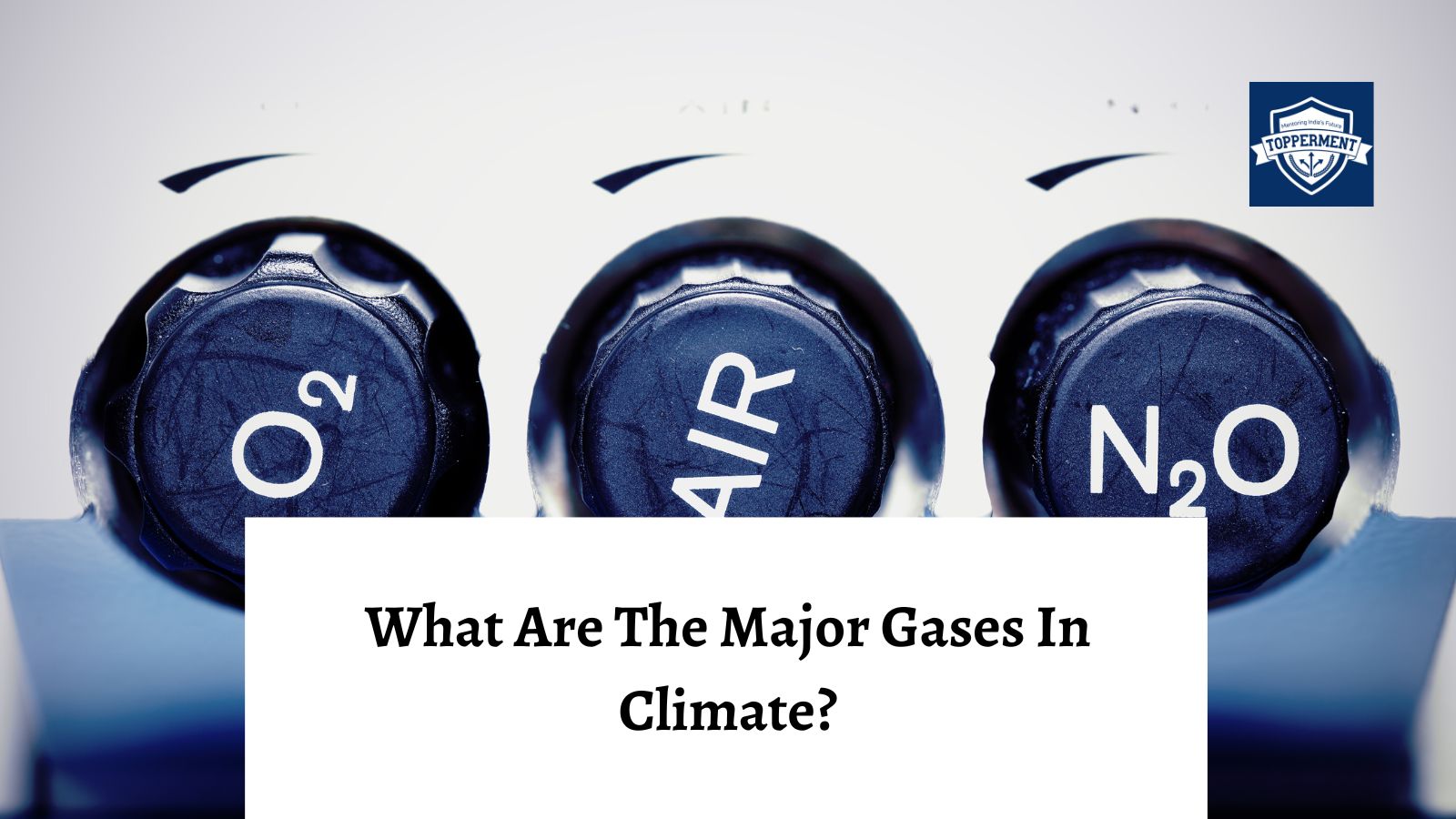
What Are The Major Gases In Climate? | UPSC Geography
The Earth’s atmosphere is composed of a variety of gases, some of which play a critical role in regulating the climate. While many of these gases occur naturally, human activities have significantly increased their concentrations, leading to climate change.
Greenhouse Gases
- Greenhouse gases trap heat in the Earth’s atmosphere and prevent it from escaping into space.
- The main greenhouse gases include carbon dioxide (CO2), methane (CH4), nitrous oxide (N2O), and fluorinated gases.
- Human activities such as burning fossil fuels, deforestation, and agriculture have increased the concentration of these gases in the atmosphere, leading to global warming.
Carbon Dioxide (CO2)
- Carbon dioxide is the most important greenhouse gas and is responsible for about two-thirds of the warming effect.
- CO2 is released through burning fossil fuels, deforestation, and other human activities.
- The concentration of CO2 in the atmosphere has increased by more than 40% since the pre-industrial era.
Methane (CH4)
- Methane is the second most important greenhouse gas and is responsible for about one-fifth of the warming effect.
- Methane is released through natural processes such as wetland decomposition and through human activities such as livestock farming and waste disposal.
- Methane is a more potent greenhouse gas than CO2, but its concentration in the atmosphere is lower.
Nitrous Oxide (N2O)
- Nitrous oxide is a powerful greenhouse gas that is released through agriculture and fossil fuel burning.
- It is responsible for about 6% of the warming effect and has a long atmospheric lifetime.
Fluorinated Gases
- Fluorinated gases, such as hydrofluorocarbons (HFCs), are synthetic compounds used in refrigeration and air conditioning.
- They are potent greenhouse gases with a high global warming potential.
Other Gases
- Other gases in the atmosphere, such as ozone and water vapor, also play a role in regulating the climate.
- Ozone in the stratosphere absorbs harmful ultraviolet radiation from the sun, while in the troposphere, it is a greenhouse gas.
- Water vapor is the most abundant greenhouse gas, but its concentration is dependent on temperature and other factors.
The concentration of gases in the atmosphere plays a critical role in regulating the climate. While some of these gases occur naturally, human activities have significantly increased their concentration, leading to global warming and climate change. To mitigate the effects of climate change, it is important to reduce greenhouse gas emissions and shift to cleaner energy sources.
Also Read
- Financial Services in India: Empowering Economic Growth | UPSC Economy
- Financial Institutions in India: Driving Economic Growth and Stability | UPSC Economy
Follow Us For More Content On:
https://www.instagram.com/topperment/
Tag:Carbon Dioxide, Flourinated Gases, Gases, Geography, IAS, IFS, India, IPS, IRS, Nitrous Oxide, Ozone, UPSC, Water Vapor



